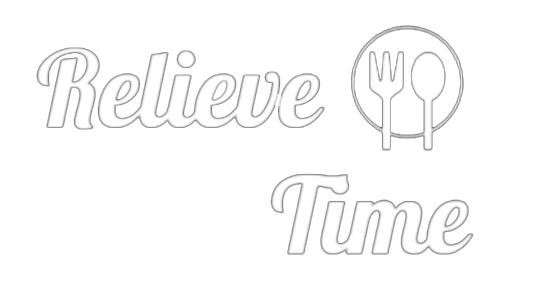Why Is Miller Lite Spelled Differently From Other Light Beers?
Light lagers are one of the most popular styles of macro beers on the market today. From Budweiser and Coors to Busch and even Pabst, practically every major beer brand has a light lager in its lineup. There was even an entire brand war fought in the category, with dozens of contenders duking it out to become America’s No. 1 light beer at the end of the 20th century. But in the vast sea of light beers available today, there’s one that continues to stand out. Not for its great taste or its success (though it has both of those things going for it, too), but for the way it’s spelled. That beer is, of course, none other than Miller Lite.
Milwaukee-based Miller Brewing Company launched Miller Lite in 1975, and in doing so, was widely credited with introducing the United States to light beer. Miller has even leaned into this messaging in the past, broadcasting Miller Lite as “the original light beer.” But despite the popularity of the low-ABV pilsner today, at the time of its launch, Miller Lite was initially viewed as a bit of a joke product.
For decades leading up to Miller Lite’s launch, “light beer” was only used to describe beers lighter in color, or more lightweight. It wasn’t a term used to describe the actual contents of the beer itself. For example, Budweiser was considered to be a light beer as it was lighter than something like Michelob, despite the fact that neither beer is one we would consider a light beer today. It’s for this reason that many, at first, turned their noses up at the new release — how could something be lighter than the lightest beer they knew of and still taste good?
Well, that’s where the decision to use the L-I-T-E spelling came into play. While Miller Lite is often cited as the first light beer, that title actually goes to Gablinger’s Diet Beer, a lower-carb and lower-calorie brew created in 1967 by Dr. Joseph L. Owades, a biochemist and employee at Germany’s Rheingold Brewing Company. Despite the fact that light (or diet) beers were relatively popular in Germany — Germans had been brewing the style since the 1930s — Gablinger’s flopped.
Following its defeat, Owades sold the recipe to friends at Chicago’s Meister Bräu Brewing, who tinkered relentlessly with it, eventually reformulating it and launching it under the name Meister Bräu Lite (note the spelling). The beer was marketed almost exclusively to diet-conscious drinkers, claiming to be a “full-strength premium beer with one-third less calories than their regular beer.”
Meister Bräu Brewing was in financial trouble, though, and while Miller Brewing wasn’t interested in buying out the whole operation, it was interested in acquiring the recipe for Meister Bräu Lite. So when the former brewery went bankrupt in 1972, Miller purchased the rights to three Meister Bräu brews, including Lite. After three years of reformulation, Miller Brewing launched Miller Lite nationwide in January 1975.
Despite initial skepticism, Miller was able to turn things around, almost instantly transforming Miller Lite into a wild success story. And leaning into that L-I-T-E spelling was an integral part of getting them there. While the previous iteration of the beer was marketed to health-conscious consumers, Miller almost entirely abandoned that messaging, eliminating mentions of lower calories and carbs that would immediately have consumers aligning the product with “light” beers. Instead, they focused on messaging like “Everything you want in a beer. And less,” and “Tastes great, less filling,” which emphasized flavor first.
Moreover, Miller marketed Miller Lite as beer for men, which other light or lighter beers weren’t necessarily doing at the time. Athletes, including retired NFL stars Matt Snell, Bubba Smith, John Madden, and more, were prominently featured in several Miller Lite commercials, nearly every single one of which was targeted for working-class men. The beer’s particular spelling, and its emphasis on language like “less filling” instead of “fewer calories,” helped convince men that this beer wasn’t a diet beer or even a light beer, it was a lite beer meant for them. And the messaging was a hit.
Just two years after Miller Lite hit the market, Miller Brewing Company — which was struggling throughout the ‘50s and ‘60s — grew to claim a whopping 10 percent of the total beer market in the U.S., making it the No. 2 brewery in America by volume. Naturally, the success of Miller Lite inspired countless brands to get in on the action, with Coors launching Coors Light in 1978 and Budweiser debuting Budweiser Light (later renamed Bud Light) in 1982.
As more and more light beers hit shelves, Miller Lite stood out for its unique “Lite” spelling, which it retained through a trademark acquired by Meister Bräu Brewing in the 1960s. For decades, Miller even attempted to sue other beer manufacturers for labeling their beers “Light” before courts ruled in 1978 that it’s a “common descriptive term” and cannot be legally “pre-empted by a single manufacturer.”
To this day, Molson Coors — which fully acquired Miller Brewing Company in 2016 — is the only holder of the “Lite” trademark, meaning they are the only beer company legally authorized to use the specific spelling. And if it’s helped them keep Miller Lite one of America’s top-selling beers since 1975, we can’t say we blame them for being so litigious.
The article Why Is Miller Lite Spelled Differently From Other Light Beers? appeared first on VinePair.
